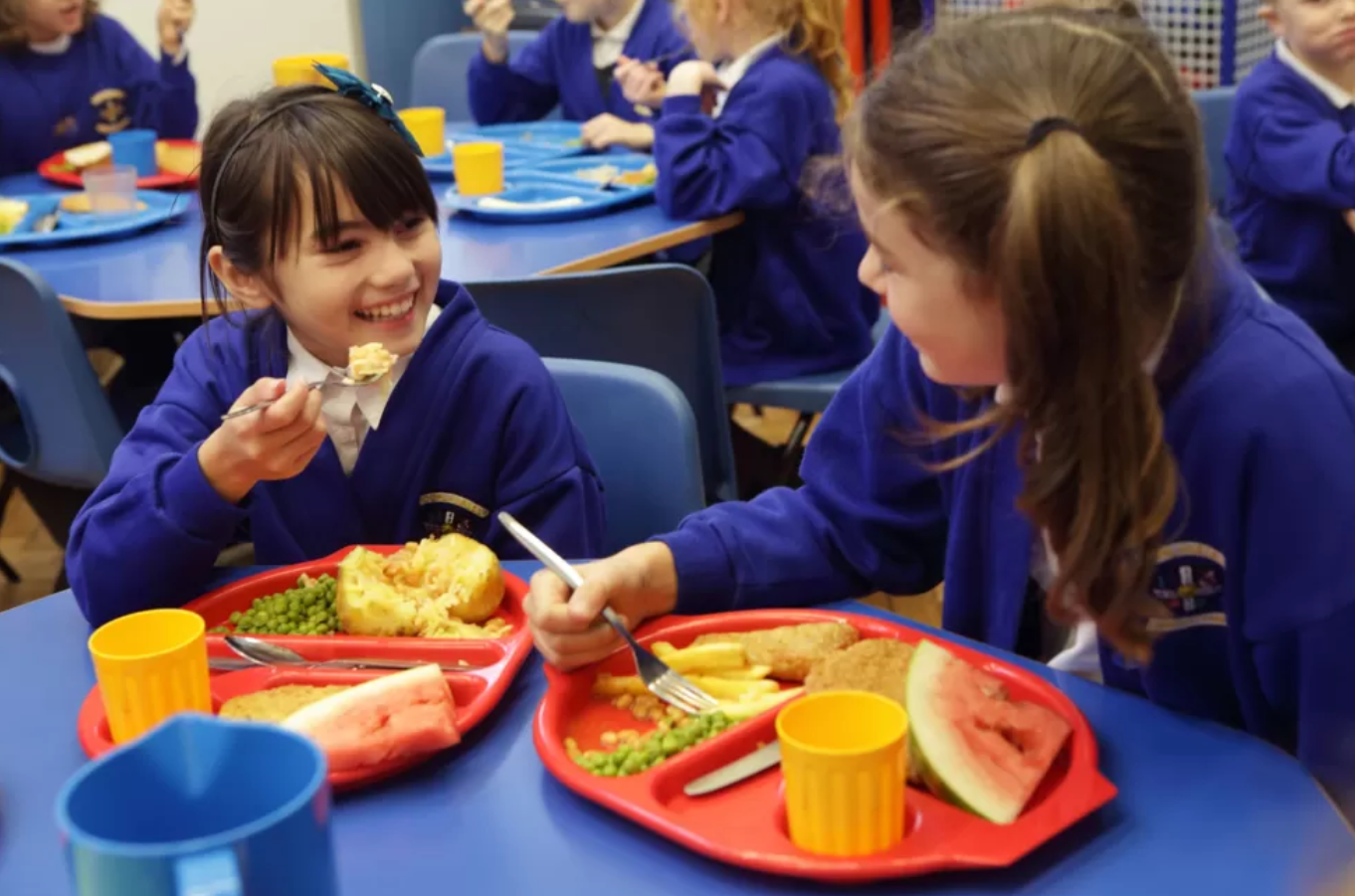
The chef Jamie Oliver wants the UK government to extend free school meals to all children living in households on Universal Credit. The government said it would keep eligibility criteria(合格标准) under review. But how many pupils currently qualify?
In England and Wales, children aged 4 to 16 are eligible for free school meals if they live in a household which gets income-related benefits (such as universal credit) and has an annual income of less than £7, 400 after tax, not including welfare payments. But about 40% of universal credit claimants(申请者) have jobs. So you can receive the benefit, but earn more than the threshold(门槛), meaning your children don’t qualify for free school meals. The income cap is £7,920 in Scotland, and £14,000 in Northern Ireland.
In 2022, around 1.9 million children were entitled to free school meals in England—22.5% of the student population. That represents a 9% increase from 2021, when 1.74 million pupils were eligible. In addition to this, another 1.25 million pupils receive free meals under the universal free school meal provision(规定) for infant schools. In Scotland, 80, 265 primary and secondary pupils (12%) qualify under the eligibility rules. Another 100,000 primary school pupils get the universal free meals given to younger children. Under the benefit and household income criteria, 100,000 pupils qualify in Wales (20% of the student population), and in Northern Ireland (30%).
According to poverty charity The Joseph Rowntree Foundation, across the UK, an estimated 4.3 million children live in what is called “relative poverty”. But only 2.3 million children currently get free school meals. Relative poverty is calculated by taking the median income—that’s the income where half of all households earn more and half earn less—and then looking at how many children live in households earning less than 60% of this. A household could earn below this threshold, but still not qualify for benefits which would equal free school meals.
1.What do we know about free school meals in the UK?
A Any child from a household on benefits can receive them.
B Only children of the unemployed have access to them.
C The eligibility criteria for them vary in different places.
D Your child can’t receive them if you earn more than £7, 400 a year.
解析:选C。C细节理解题。根据第二段第一句可知,在英格兰和威尔士,生活在领取社会福利金以及家庭税后年收入低于7400英镑的家庭才有资格获得免费校餐;根据最后一句可知,苏格兰要求的年收入上限是7920英镑,北爱尔兰是14000英镑。即在英国,各个地方孩子们申请免费校餐的标准是不一样的。故选C。
2.How many children get free school meals in England in 2022?
A Around 1.9 million.
B About 1.25 million.
C Around 3.64 million.
D About 3.15 million.
解析:选D。D数字计算题。根据第三段第一中的“In 2022, around 1.9 million children were entitled to free school meals in England”以及第三句“In addition to this, another 1.25 million pupils receive free meals under the universal free school meal provision(规定) for infant schools”可知,在2022年,英格兰有(1.9+1.25=)3.15 million孩子获得免费校餐。故选D。
3.What can be learnt from the last paragraph?
A The definition of relative poverty is not scientific.
B Not all children living in relative poverty get free meals.
C More children live in relative poverty than counted.
D The gap between rich and poor in the UK is wide.
解析:选B。B细节理解题。通读最后一段可知,全英国有430万儿童处于相对贫困中,但目前只有230万儿童获得免费校餐,即并不是所有的贫困孩子都符合领取免费校餐的条件。故选B。
4.What tone did the author use when writing the text?
A Serious.
B Aggressive.
C Humorous.
D Frustrating.
解析:选A。A推理判断题。根据文中所列举的众多数据可知,作者在写作本文时采用了非常严肃的语气。故选A。